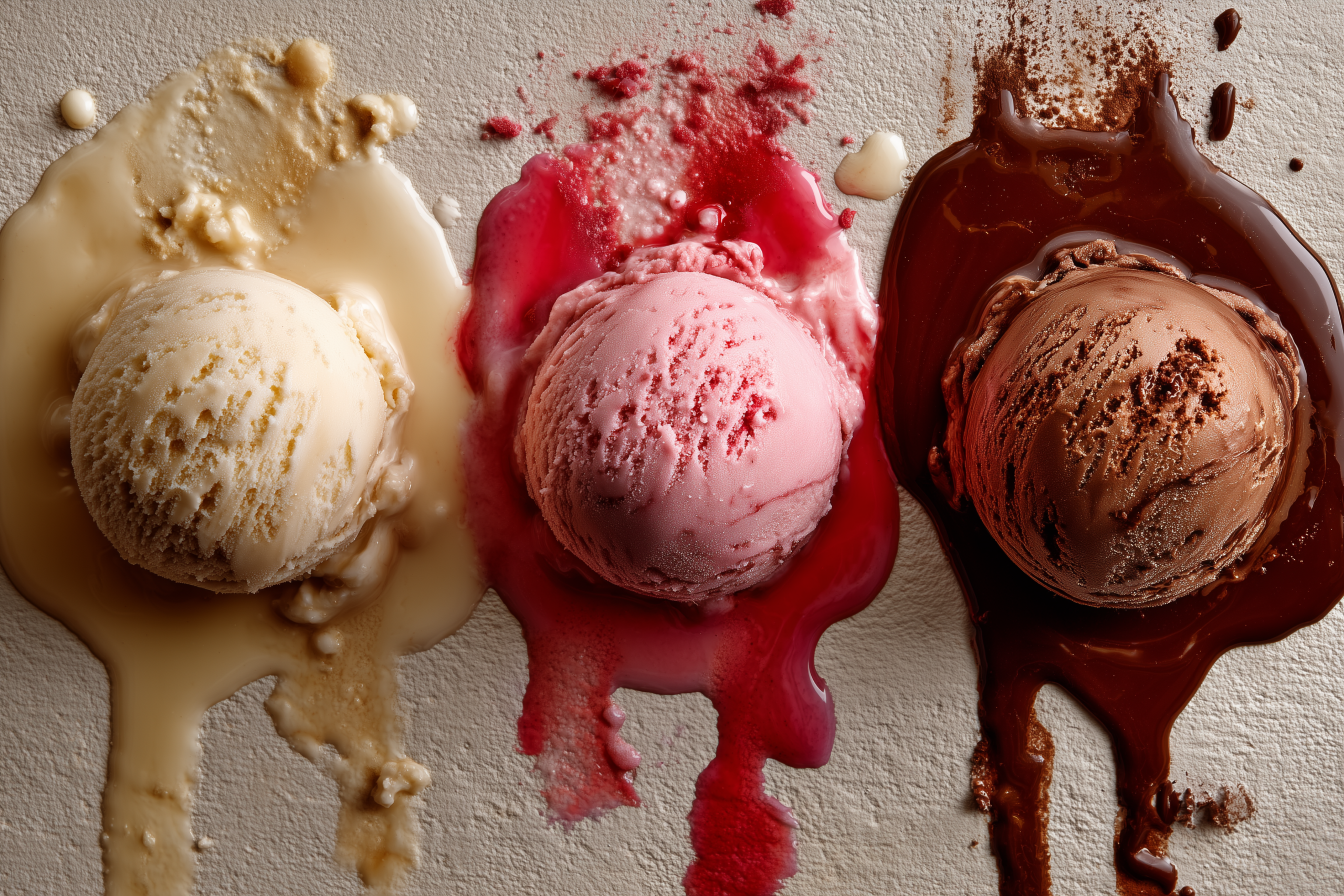Artisanal Gelato in Milan – Learning Italian is not only about grammar charts, verb conjugations or idiomatic expressions—although we truly enjoy those. Sometimes, the most authentic way to enter the heart of a culture is through something simple, shared, and universally loved: gelato.
Creamier than ice cream, rooted in centuries of history, and rich with linguistic nuances, gelato is more than a dessert. It is a small, delicious window into Italian life. And in Italy—especially in Milan—the language of gelato is something every student, visitor, or new resident should learn to speak.
In this article, we explore its history, its most curious flavors, the vocabulary every gelato lover should know, and, of course, our selection of the best artisanal gelato in Milan, including Il Centro’s personal favourite.
A Short but Sweet History of Gelato
Ask ten Italians who invented gelato and you will probably receive ten different answers. Some trace it back to ancient Persia; others to Roman emperors who chilled fruit with mountain snow. The gelato we know today, however, has two key Italian pioneers.
Bernardo Buontalenti: the Florentine Innovator
A Renaissance polymath—architect, engineer, stage designer—Buontalenti is said to have created the first cream-based gelato in the 1500s for the court of Caterina de’ Medici. His signature flavour, “crema Buontalenti,” is still made today: rich, velvety, and deeply elegant.
Francesco Procopio dei Coltelli: the Sicilian Master
A few decades later, Francesco Procopio refined the gelato-making process and opened Café Procope in Paris, contributing to the spread of gelato throughout Europe. His attention to refinement, presentation and technique transformed gelato from a courtly curiosity into an international delight.
From Florence to Sicily, and from Paris back to Italy, gelato evolved into one of the most recognisable symbols of Italian artisanal craftsmanship.
Gelato vs. Ice Cream: The Real Difference
Many of our students ask us about the difference between gelato and ice cream. The short answer: gelato is the slower, more artisanal Italian relative. The longer answer involves a few key characteristics:
- Gelato contains less fat (usually 5–9%).
- Gelato incorporates less air during churning, resulting in a denser, creamier texture.
- Gelato is served at a slightly warmer temperature, enhancing its flavour.
- Gelato relies on fresh, natural ingredients, traditionally with minimal stabilisers or preservatives.
These characteristics allow flavours to shine. A good pistachio gelato tastes like real pistachios; hazelnut tastes like toasted hazelnuts; chocolate is intense and pure. And one essential rule: authentic pistachio gelato is never bright green.
Essential Gelato Vocabulary

If you want to sound like a local at the gelateria, these words will help.
Coppetta or cono?
Coppetta means “cup,” while cono means “cone.” The cone is more traditional, but the cup is cleaner and more practical.
Gusti
Gusti are the flavours. A classic question at the counter:
Quali gusti ci sono oggi?
“Which flavors do you have today?”
Mantecato
This term refers to the creamy texture obtained through slow, careful churning.
Artigianale
Indicates artisanal, handcrafted gelato—usually a promise of higher quality and natural ingredients.
Granita
A Sicilian classic: shaved ice made with fruit juice, coffee, or almond milk.
Panna montata
Fresh whipped cream. In Italy, it is often added on top of gelato—delicate, lightly sweetened, and never from a can.
The Most Beloved Gelato Flavors in Italy

- Pistacchio: the undisputed favourite, made only with real pistachios.
- Nocciola (hazelnut): rich and aromatic, especially from Piemonte.
- Stracciatella: milk cream with delicate chocolate flakes.
- Cioccolato fondente: deep, intense dark chocolate.
- Fior di latte: pure milk flavour, essential and elegant.
- Zabaione: egg yolks and marsala wine, traditional and comforting.
- Cassata siciliana: ricotta, candied fruit and pistachio.
Unusual and Creative Gelato Flavors
Italy loves tradition, but it also enjoys surprising the palate. Some artisanal gelaterie experiment with:
- Gorgonzola or Parmigiano gelato, paired with figs or pears.
- Herbal flavours such as rosemary, basil or sage.
- Black sesame, appreciated especially by Japanese guests.
- Saffron, inspired by Milan’s famous risotto.
- Charcoal, more visual than traditional, but intriguing.
A flavour cherished by food lovers is “pane, burro e marmellata”—bread, butter and jam—an edible memory of Italian childhood.
Artisanal Gelato in Milan: Quality, Creativity and Tradition
Milan is known for fashion and design, but it deserves equal recognition for its exceptional gelato. The city offers some of Italy’s finest artisanal gelaterie, where tradition meets innovation. Here are the places we warmly recommend to our students.
The Best Artisanal Gelato in Milan: Il Centro’s Recommendations

Pavé – Gelati & Granite (Porta Venezia)
A modern and impeccably crafted gelato, made with natural, carefully sourced ingredients. Their signature flavours include pistachio, toasted almond, and Sicilian brioche filled with gelato. Pavé is one of our favourites for its balance, elegance and authenticity.
Latteneve (Porta Romana)
A small gem inspired by Sicilian tradition, known for its purity and refinement. Flavours such as Avola almond, lemon and basil, or ricotta with honey and walnuts highlight the natural beauty of each ingredient.
Ciacco – Gelato Senzatomica (Duomo / Via Spadari)
Located near the cathedral, Ciacco focuses on “clean label” gelato—free from artificial additives. Their dark chocolate, fiordilatte and seasonal fruit sorbets showcase the highest quality ingredients.
Out of the Box – Gelato (Porta Venezia / Centrale)
An innovative gelateria that remains firmly rooted in artisanal principles. Flavours such as salted pistachio, yuzu and raspberry, or salted caramel demonstrate their creativity and technical precision.
Artico Gelateria Tradizionale (Isola / Centrale / Città Studi)
A respected name in Milan, offering high-quality gelato across multiple locations. Their hazelnut from Piemonte, pure pistachio and handmade zabaione are consistently excellent.
Il Centro’s Favourite: Pavé – Gelati & Granite

Pavé is the artisanal gelateria we often recommend first. It produces gelato daily, using only fresh, natural ingredients and a thoughtful balance of flavours. Many of our students and teachers stop there after class, and it has become one of our most cherished spots.
Our favourite flavour: the salted pistachio—creamy, rich and deeply authentic, a perfect expression of what artisanal Italian gelato should be.
A Gelato Walk After Class
If you are studying at our Italian Language School, you can easily plan a small gelato walk through the city centre. Begin in Brera, stop at Ciacco near the Duomo, stroll along Corso Vittorio Emanuele, and finish in Porta Venezia with a final tasting at Pavé. It is a simple, pleasant way to practice Italian expressions while experiencing Milan’s atmosphere.
Why Gelato Helps You Learn Italian
It may sound surprising, but Artisanal Gelato in Milan can genuinely support your language learning journey. Ordering at the counter helps you practice essential expressions such as “mi piace,” “vorrei,” or “ne prendo ancora un po’.” Flavour names often contain cultural references, and the overall experience is relaxed, social and memorable. Positive emotions make learning smoother—and gelato certainly offers many.
Interactive Gelato Exercises
To make your learning journey even more enjoyable, here are three interactive activities inspired by the world of gelato. These exercises help you expand your vocabulary, review useful expressions, and practise communicating naturally in Italian through a topic everyone loves.
You can try each activity directly on this page. Repeat them as many times as you like to reinforce new words and expressions before your next visit to an Italian gelateria.
Pistachio Gelato Recipe – Vocabulary and Ingredients
This activity introduces the essential vocabulary for ingredients and simple kitchen actions. It is an excellent way to discover how authentic pistachio gelato is made while expanding your Italian culinary vocabulary.
Gelato Flavours – Learn and Practise the Vocabulary
In this activity, you can review the most common gelato flavours found in Italy. It is a simple and enjoyable way to learn useful vocabulary and to familiarise yourself with the flavours you will encounter in a traditional gelateria.
Ordering Gelato Using the Italian Conditional
This activity helps you practise polite and natural expressions used when ordering gelato in Italian. You will encounter common forms such as vorrei, prenderei, and mi piacerebbe, all essential in real-life situations.
What Gelato Teaches Us About Italy
Gelato reflects many aspects of Italian culture: simple ingredients transformed into something exceptional; tradition combined with creativity; craftsmanship expressed through taste. Just like the Italian language, it invites you to slow down, observe, savour and enjoy.
During your next walk in Milan—after your Italian class, after work, or during a weekend visit—choose a gelateria, try a new flavour and take a moment to appreciate it. In Italy, gelato is not just a treat: it is an everyday pleasure that brings people together.

